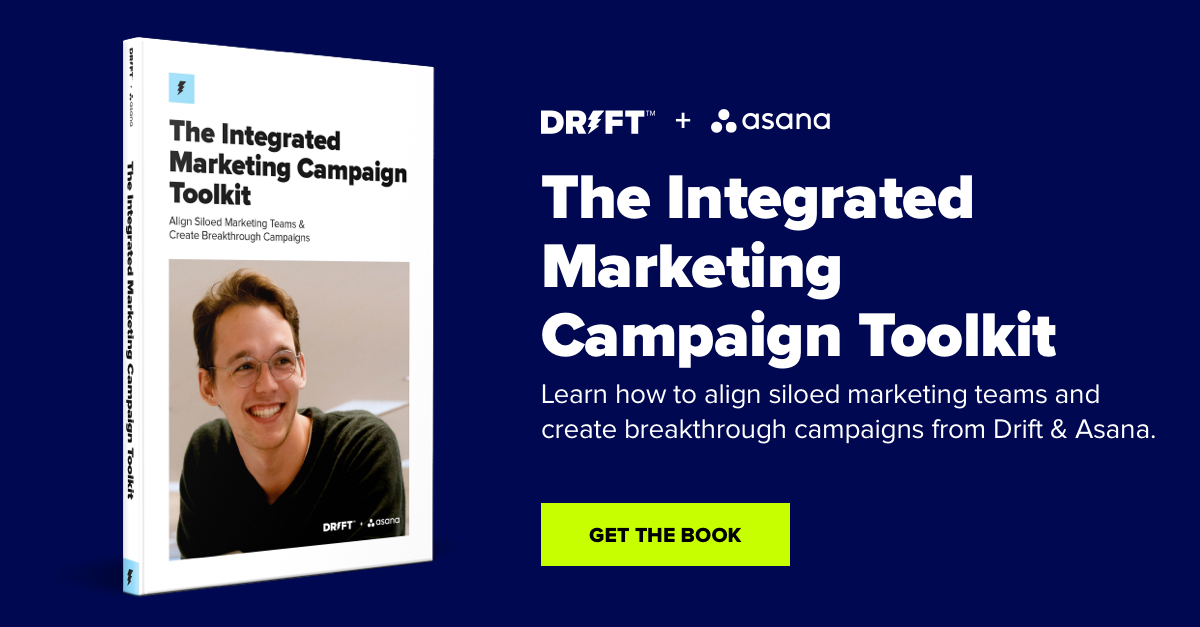These days, there’s so much focus on executing campaigns and reporting on their results – but (if you ask me), nowhere near enough focus on planning.
As marketing teams grow, it becomes harder to collaborate between different skill sets and disciplines. Instead of one content marketer, one product marketer, and one growth marketer, you’ve got a few of each.
Your content marketers are writing ebooks, your product marketers are plotting the next big launch, and your growth marketers are optimizing Google search ads.
But is everyone working together to create cohesive journeys?
If your answer is somewhere between “no” and “unsure,” keep reading.
We’re walking you through how to plan integrated marketing campaigns to reach your audience with a cohesive message.
What Is an Integrated Marketing Campaign?
An integrated marketing campaign is one that pulls together collaborators from different marketing teams and includes multiple offers across multiple content channels.
The campaign might involve a live webinar, three blog posts, an in-app message, twenty social media posts, and employee advocacy to tell a compelling narrative. These types of campaigns bring together product-led growth strategies and the sales team’s need for content, so that you’re using all available channels to get an important message across.
You might use an integrated marketing campaign to own a content topic, release a new feature, or pivot to a new target audience.
At Drift, we use Asana to map out these campaigns, and we’ve created a toolkit (complete with Asana workflow templates) .
How to Plan an Integrated Marketing Campaign
An integrated marketing campaign should break down silos. By nature, this makes it harder to plan than a campaign worked on by a single team.
Here’s how we do it at Drift.
Work Across Teams, Come Up with Ideas and Get Aligned
There shouldn’t be any one team that is in charge of coming up with the ideas and assigning the appropriate execution pieces to the other teams. This can cause other teams to see the work as separate from their own. Worse, you’ll be limited on inspiration.
Instead, make it more democratic. Get together with the cross-disciplinary team and allow everyone to come up with ideas around a certain theme, audience, or release. 47% of marketers say that their data is siloed and difficult to access, so when you work together, you’ll know what has been proven to work in the past.
You might get together with a brand marketer, content writer, and product marketer to come up with a campaign to promote a new service offering.
Take a Quarterly Approach
It’s easy to see integrated marketing campaigns as one-and-done pushes.
You should only do them if you have something major to promote, right? Wrong.
At your company, there should always be at least one integrated campaign running. Why? Because there’s always a need for multichannel marketing and cohesive buying journeys. That never goes away.
For cleaner execution, start with one integrated campaign per quarter.
This will help your cross-disciplinary team systematize the work and always be available to collaborate.
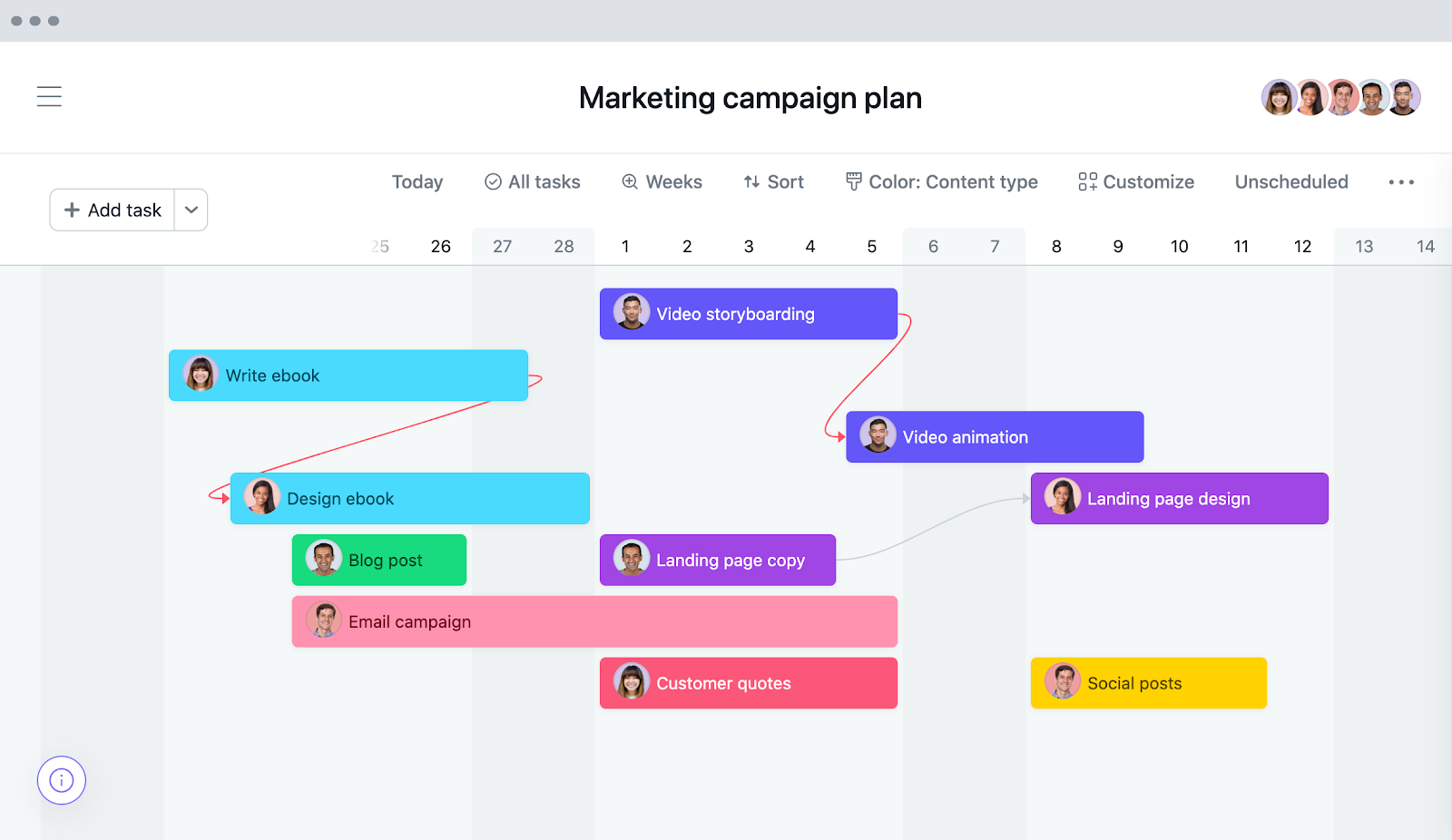
Without this consistency, the people executing on this work might go back to their siloes and get too busy to collaborate with each other.
Craft a Cohesive Narrative for Each Awareness Stage
A great campaign always needs a clear story.
Once the whole team is aligned on the idea, product marketing owns the narrative creation. Within each campaign, there might be two to four programs. These programs separate the message more distinctly for buyers in different awareness stages.
For example, you might have a campaign about your company’s expansion to working with media companies. Within this campaign, you might have one program for media executives who know of your brand, one for media executives who are aware of your type of solution but not your brand, and another for media executives who are not aware of your solution at all.
Or, if your campaign isn’t about a specific vertical (like media), you might have programs for different target audiences. And within your programs, you might cover different awareness stages.
Regardless, you’ll want this all mapped out. We use brief templates in Asana that include the overview of the program narrative, the narrative for different funnel stages, and any SEO or keyword considerations.
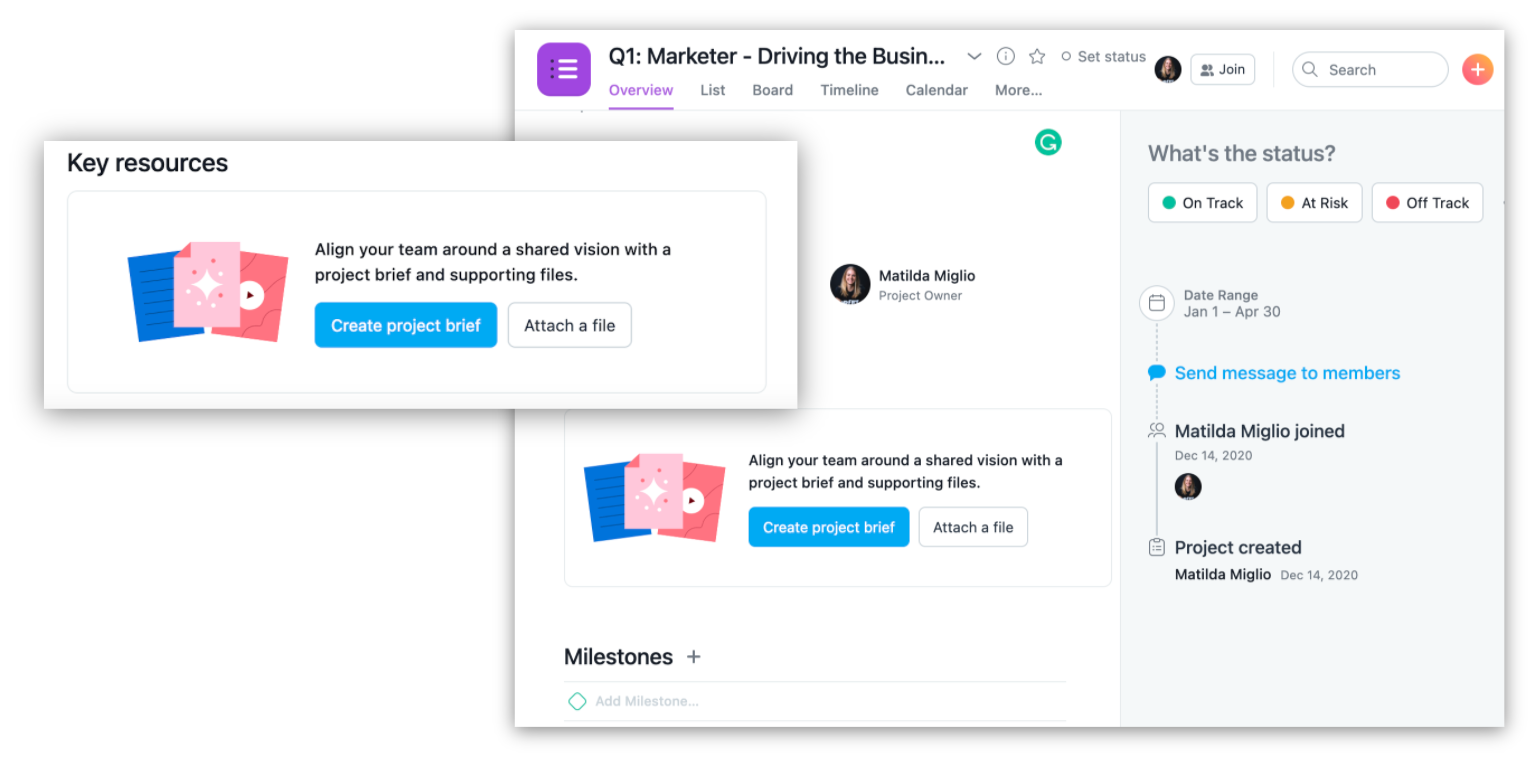
Create Multiple Forms of Valuable Content
Within an integrated marketing campaign, you’ll have many different types of content, and you’ll share it across multiple channels.
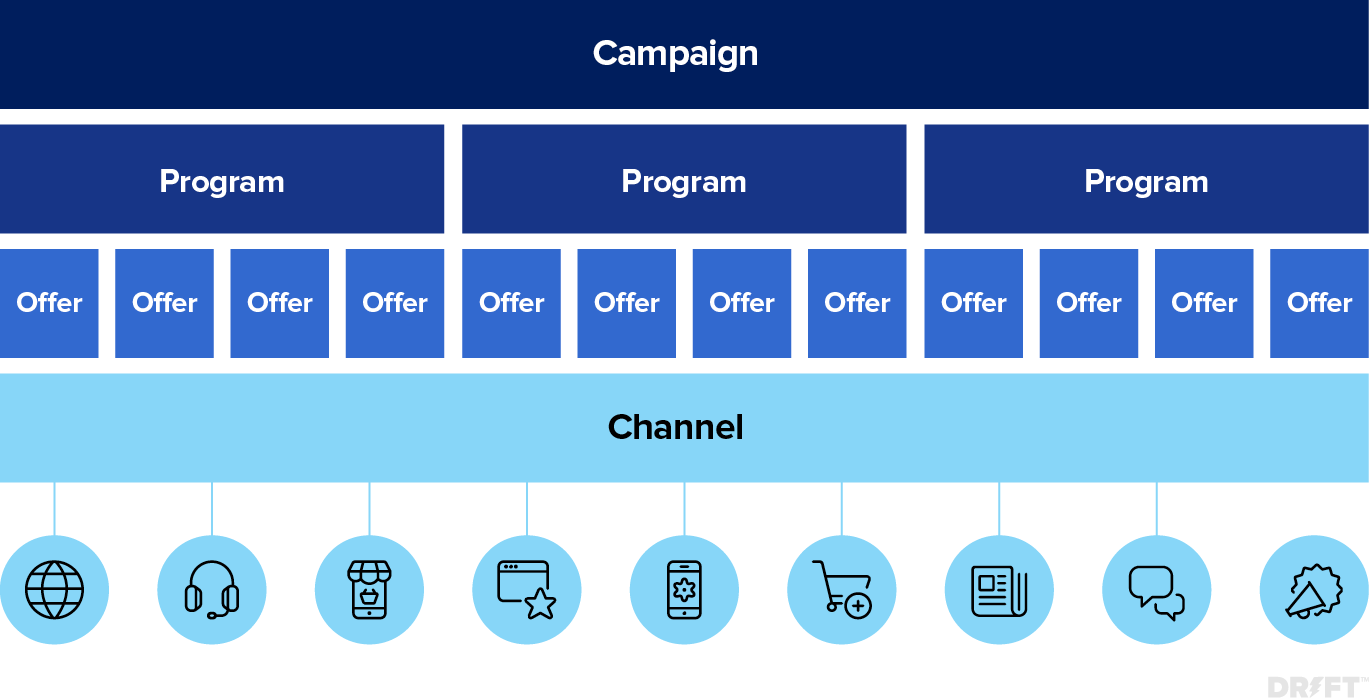
As mentioned, campaigns are large themes, and programs are smaller themes or segments within that theme.
When you’re clear on your campaigns and programs, you then need to figure out your offers and channels.
Offers are super valuable pieces of content like toolkits, templates, guides, and webinars. They are actionable and cause a mini transformation for your audience that is related to the big transformation your company provides.
Each offer should be distributed and promoted across multiple channels.
Schedule Each Element Weeks or Months in Advance
It’s important to clearly plan how your team will create and promote these offers. We like to use meeting templates in Asana to make sure that all of our meetings have a really clear agenda. We’ll tie milestones and tasks to our meetings so everyone knows what we’re discussing.
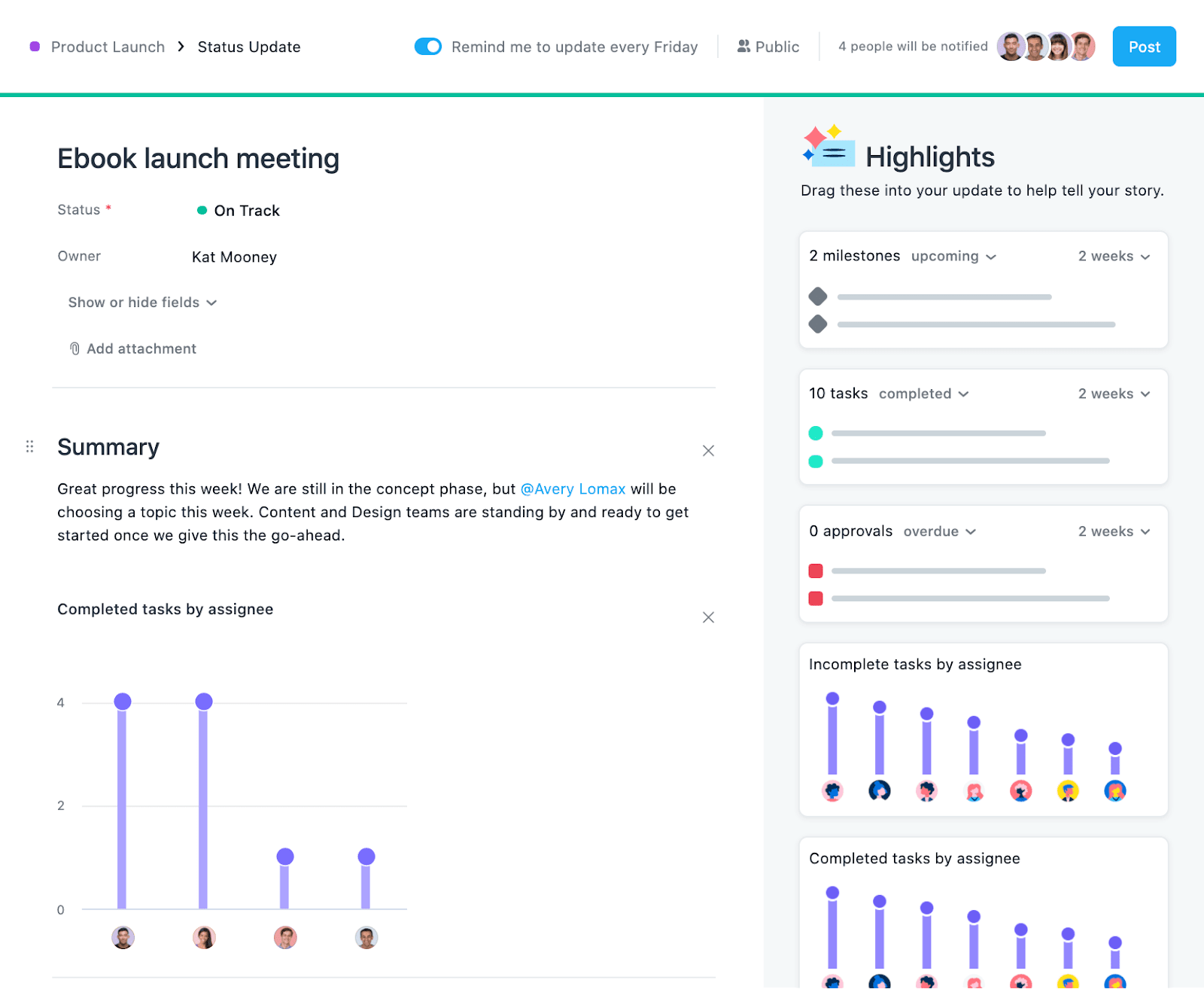
Then, we’ll use this meeting time to better clarify these tasks and their deadlines.
We’ll schedule them out and give plenty of wiggle room for collaboration and approvals.
Create a Clear (and Integrated) Approval Process
For each offer, you should determine as a team who needs to approve it before it even gets created. To make things simpler, have the approver review the offer’s various channels. For example, let’s say you’re releasing an ebook on employee wellness programs. You can have a product marketer approve the ebook and its promotional content like blogs and social media posts.
That one person will be in charge of the messaging for that offer, and the channel owners can make sure it fits the needs of each channel before asking for approval.
Know the Micro and Macro Metrics That Matter
How do you measure the success of an integrated marketing campaign?
You need both micro and macro metrics.
Your macro metrics might be the number of people who engaged with your offers and the number of leads generated from each program. Your micro metrics will likely be for impressions and engagement with the relevant channels.
It’s so important to have both micro and macro metrics, so that as you continue to collaborate together, you’ll know what needs to be improved to meet the larger goals.






